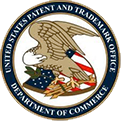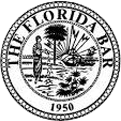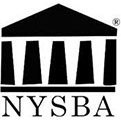Do I have to register my trademark with the U.S. Patent and Trademark Office?
No. You can establish common law rights in a mark based on legitimate use of the mark. You should however, use the (TM) or (SM) symbol for a trademark or servicemark respectively to indicate that the name, slogan or logo belongs to you.
Why would I want to register my trademark if I don't have to?
Federal trademark registration provides several notable benefits, such as, a legal presumption of the registrant's ownership of the mark and the registrant's exclusive right to use the mark nationwide or in connection with the goods and/or services listed in the registration.
When should I use the symbols, TM, SM and ®?
You may use the "TM" or "SM" symbols for trademark and service mark respectively to alert the public to your claim, even if you have not filed a trademark application with the U.S. Patent and Trademark Office. Conversely, the symbol ® denotes a federal trademark registration and may be used only after the U.S. Patent and Trademark Office actually registers a mark.
What is the difference between a trademark and a service mark?
Trademarks promote goods or products while service marks promote services. It's a subtle distinction, best explained with an example. The name of a restaurant, for instance would entail a service mark whereas, the name of a particular menu item might entail a trademark. The reason for this is that the restaurant provides a service, whereas the menu item falls into the "goods" category.
How can I register my mark?
The first step is to conduct a trademark search to determine the availability of the trademark. If the mark is not generic, does not present a conflict and is otherwise available, a trademark application is filed with the USPTO. The application is then examined by a trademark examiner. The USPTO makes the ultimate determination of whether or not to register a mark.
What is trademark infringement?
Many millions of dollars are spent every year litigating the complex issue of trademark infringement. However, a simple one-sentence definition of trademark infringement is the unauthorized use of a mark, or of a mark that is confusingly similar to it, used on the same goods or services, or in certain circumstances on similar or dissimilar goods and services.
How long does it take to conduct a trademark search?
A trademark search generally takes one (1) week to complete.
How long does it take to register a mark with the U.S. Patent and Trademark Office?
The average time required to register a mark typically ranges from one to two years. However, the length of time depends on several factors, including the nature of any objections raised by the trademark examiner at the USPTO. In many cases, the time period may be more than two years.
How can I protect my mark outside the United States?
Protecting a trademark internationally requires filing a new application in each individual country. However, this procedure is simplified with the help of treaties and conventions.
The European Union, for example, has created a Community-wide trademark system that covers its member nations.
In addition, the Paris Convention for the Protection of Industrial Property is a treaty that is adhered to by 168 countries, including the United States. It provides that each country guarantees to the citizens of the other countries the same rights in patent and trademark matters that it gives to its own citizens.
Further, the Madrid Protocol and the Pan-American Convention for Trademark and Commercial Protection are among several other treaties intended to simplify international trademark registrations.
Do I need an attorney to file a trademark application with the United States Patent and Trademark Office?
No. You may file your application pro se. However an attorney may be able to provide additional advice regarding matters of potential trademark infringement and assistance in responding to objections raised by the trademark examiner, as well as guidance in seeking international registrations.






 Print
Print Bookmark
Bookmark